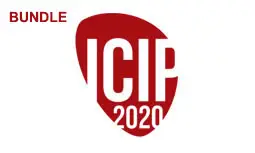NEW DESIGN FOR COLOR SCREEN SETS FOR HIGH-END DIGITAL COLOR PRESS
Tal Frank, Oren Haik, Altyngul Jumabayeva, Jan P. Allebach, Yitzhak Yitzhaky
-
Members: FreeSPS
IEEE Members: $11.00
Non-members: $15.00Length: 14:29
27 Oct 2020
Digital halftoning is an essential part of the process for printing color, continuous-tone content. Traditionally, the highest quality has been achieved with analog, offset lithographic presses, using color screen sets that yield periodic, clustered-dot halftone patterns. Increasingly, these systems are being supplanted by digital presses that are based on either electrophotographic or inkjet marking processes. Due to the inherent instability of the electrophotographic marking process, periodic, clustered-dot halftone patterns are also widely used with such presses. However, digital presses have much lower resolution than their analog counterparts. Simply mimicking the traditional screen designs used with commercial, offset presses will result in halftone patterns that are more susceptible to moire due to the interaction between the periodic patterns used to render the different color channels. The moire can be reduced by increasing the frequency of the halftone patterns. But this may make the print appear grainier than its analog counterpart. In this paper, we introduce a principled design procedure that allows one to design color screen sets that generate periodic, clustered-dot halftone patterns that improve color stability without increasing graininess.



